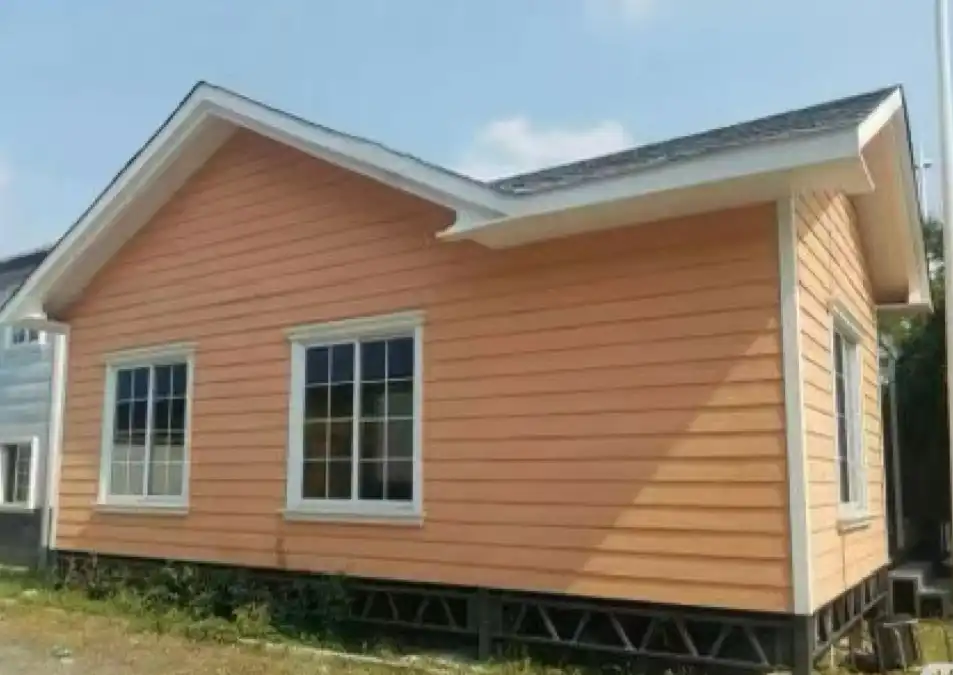Sustainable Materials for Exterior Wall Cladding
The quest for eco-friendly exterior wall cladding begins with the selection of sustainable materials. These options not only reduce environmental impact but also offer unique aesthetic qualities and impressive durability.
Reclaimed Wood Cladding
Reclaimed wood has emerged as a popular choice for environmentally conscious homeowners. This material, salvaged from old barns, factories, or other structures, brings a rustic charm and rich history to your home's exterior. Beyond its visual appeal, using reclaimed wood for cladding helps reduce deforestation and waste. It's important to note that reclaimed wood requires proper treatment to ensure its longevity and resistance to weathering.
Recycled Metal Cladding
Reused metal cladding, especially aluminum and steel, offers a present-day and smooth appearance while being exceedingly economical. These materials can be reused more than once without losing their auxiliary astuteness. Metal cladding is known for its strength, fire resistance, and moo support prerequisites. It's a fabulous choice for property holders looking for a long-lasting, eco-friendly arrangement that doesn't compromise on fashion.
Fiber Cement Cladding
Fiber cement is a composite fabric made from cement, sand, and cellulose filaments. It's a naturally inviting alternative as it employs less vitality to create compared to conventional materials. Fiber cement cladding imitates the look of wood or stone but offers predominant toughness and fire resistance. It's too safe to decay, bugs, and extraordinary climate conditions, making it a commonsense choice for different climates.
Energy-Efficient Exterior Wall Cladding Systems
Energy efficiency is a crucial factor in eco-friendly home design. Modern exterior wall cladding systems not only protect your home but also contribute to significant energy savings.
Insulated Cladding Panels
Insulated cladding panels are a revolutionary product in the world of exterior wall cladding. These panels combine aesthetic exterior finishes with high-performance insulation materials. By providing an additional layer of insulation, they significantly reduce heat loss in winter and heat gain in summer, leading to lower energy consumption and reduced utility bills. The thermal performance of these panels can be customized to meet specific climate requirements.
Ventilated Façade Systems
Ventilated façade frameworks, moreover known as rainscreen cladding, make a discuss hole between the cladding and the building's structure. This plan permits characteristic discussion circulation, which makes a difference in controlling temperature and dampness levels. By lessening the warm stack on the building, ventilated façades contribute to progressed vitality productivity. Moreover, this framework upgrades the life span of both the cladding fabric and the building structure by anticipating moisture-related issues.
Green Wall Cladding
For the ultimate in eco-friendly exterior wall cladding, consider a living green wall. This innovative approach involves growing plants directly on the building's exterior. Green walls not only provide natural insulation but also improve air quality, reduce urban heat island effects, and enhance biodiversity. While they require more maintenance than traditional cladding options, the environmental benefits and unique aesthetic appeal make them an exciting choice for eco-conscious homeowners.
Eco-Friendly Finishes and Treatments for Exterior Cladding
The eco-friendliness of exterior wall cladding extends beyond the base materials to include finishes and treatments that enhance performance and sustainability.
Low-VOC Paints and Sealants
When applying finishes to exterior cladding, opt for low-VOC (Volatile Organic Compound) paints and sealants. These products release fewer harmful chemicals into the environment during application and over time. They not only reduce air pollution but also contribute to better indoor air quality. Many low-VOC options offer the same durability and color range as traditional products, making them a smart choice for eco-friendly home exteriors.
Natural Wood Treatments
For wood cladding, consider natural treatments that protect the material without relying on harsh chemicals. Linseed oil, tung oil, and beeswax are examples of natural substances that can enhance wood's water resistance and durability. These treatments allow the wood to age gracefully while maintaining its protective properties. Some homeowners even choose to let their wood cladding weather naturally, embracing the silvery patina that develops over time.
Reflective Coatings
Intelligentcoatings canessentiallyupgradethevitalityproficiencyofoutsidedividercladding. These coatings,regularlyconnectedto metal or concrete cladding, reflect ahugeparcelofsun poweredradiation. Bydecreasingwarmassimilation, theyoffer assistancekeep buildings cooler in hot climates,lesseningtherequirefordiscussconditioning. This notas it weresparesvitalitybuttooamplifiesthelife expectancyof the claddingfabricby minimizingwarmpush.
Conclusion
Eco-friendly exterior wall cladding options offer a perfect blend of sustainability, performance, and aesthetics. From recycled materials to energy-efficient systems and environmentally conscious finishes, there are numerous ways to make your home's exterior more sustainable. These choices not only contribute to a healthier planet but also often result in long-term cost savings through improved energy efficiency and durability. As you consider upgrading your home's exterior, remember that sustainable choices can have a lasting positive impact on both your living environment and the world around you.
For more information on sustainable exterior wall cladding solutions and expert advice tailored to your specific needs, don't hesitate to reach out to us at info@sdqsc.com. Our team at Weifang Sandong Building Materials Co., Ltd. is committed to providing innovative, eco-friendly cladding options that enhance both the beauty and performance of your home.